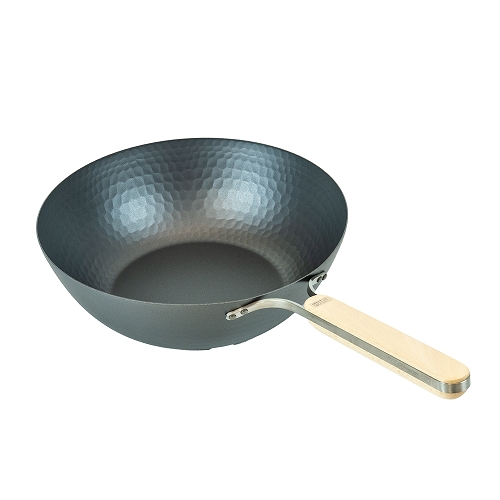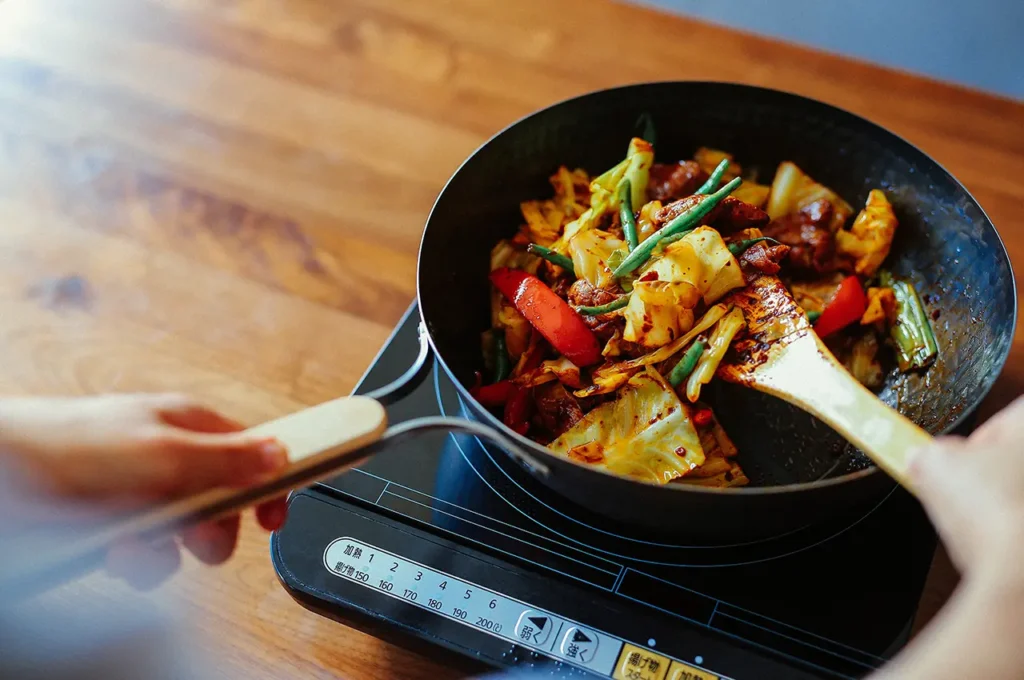
A Tasty Way to Get More Iron? Try Cooking with Cast Iron!
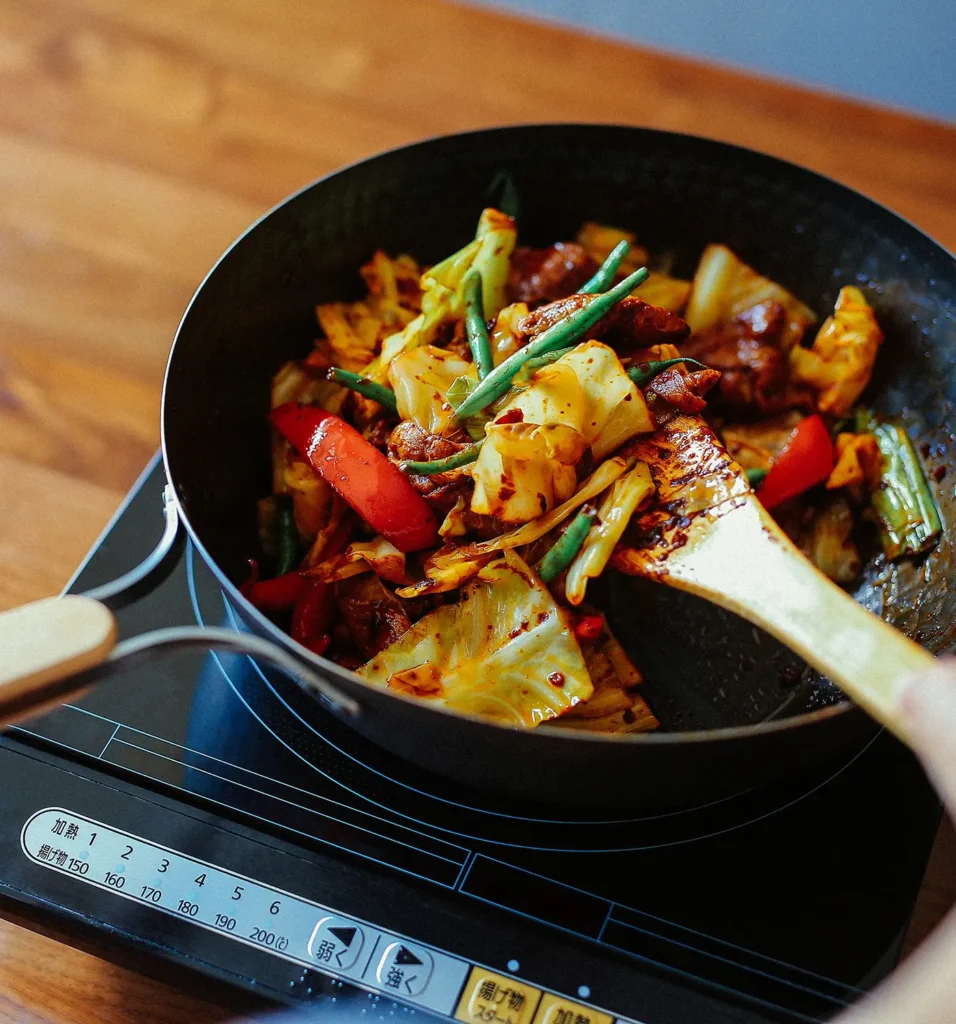
A Tasty Way to Get More Iron?
Try Cooking with Cast Iron!
It is said that boiling water in an iron kettle makes the water smoother because iron dissolves into it. Taste is subjective, so it's hard to say definitively, but if the material is iron, repeated use will certainly cause iron to dissolve into the food being cooked. Since both iron kettles and iron pans are made of the same iron material, you often see catchphrases like "Cooking with an iron pan allows you to intake iron" and "Use an iron pan to absorb iron if you're deficient!" But what is the reality?
Our company has never promoted the advantage of obtaining iron from our products, but is it true or just a myth that "you can get iron from an iron pan"? Although we have concerns about actually testing it, as a manufacturer, we should know the truth! Therefore, we conducted a (forbidden?) experiment this time and will report on its contents.
How much iron should you intake in a day?
According to the Ministry of Health, Labour and Welfare's e-Health Net, the recommended daily intake of iron from food is 7.5 mg for adult men, 10.5 mg for women with menstruation (6.5 mg for women without menstruation). There are two types of iron in food: "heme iron," which is easily absorbed by the body, and "non-heme iron." It is said that about 15% of the iron from food is absorbed into the body.
Based on that, to intake the necessary daily amount of iron from food alone, you would need to consume 450g of spinach (15-20 bunches) or 6 packs of natto (each pack being 50g, commonly sold in packs of three). Even for those who really like spinach or natto, this is a tough amount to consume every day.
Is iron really dissolving from the iron pan?
Now, let's start the experiment. First, the iron pan we prepared is our highly recommended wahei enzo 22cm wok, which is lightweight and easy to use despite being an iron pan. Its hammered pattern and handle's beauty make it a popular product.
As a comparison, we also prepared a similarly sized, commonly used aluminum pan with fluororesin coating.
First, we put the same amount of pure water, which contains no impurities, into each pan and boiled it for three minutes.
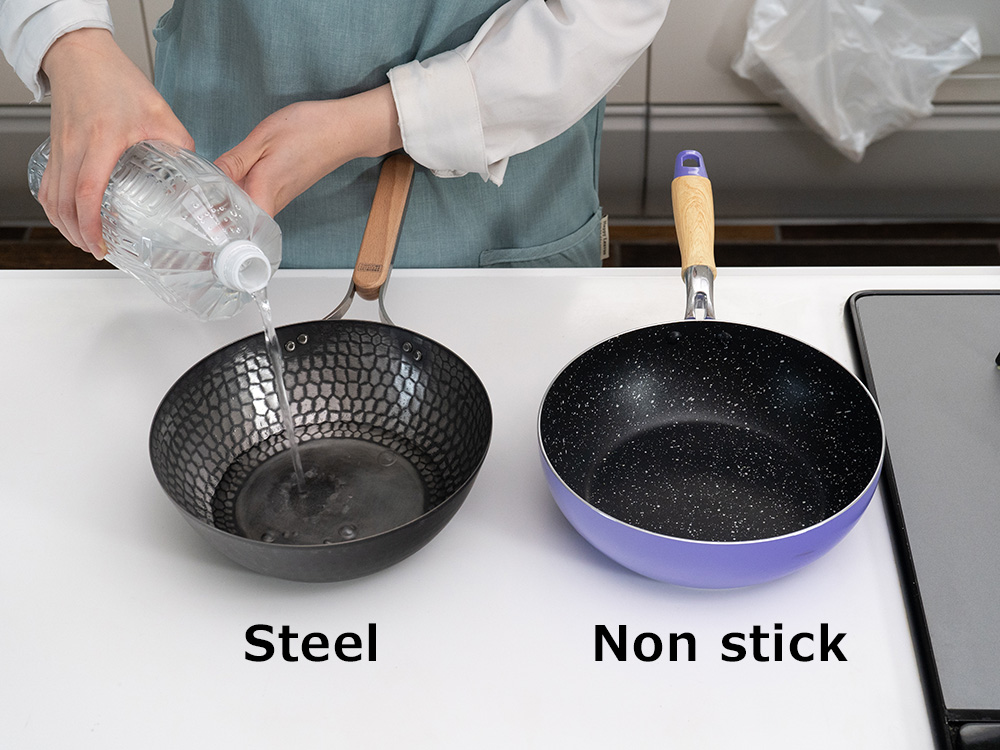
Since the two pans have almost the same capacity, the time to reach boiling was also nearly the same. Although there is a difference in the color of the inner surface of the pans, there were no visible differences during boiling. We also did not notice any significant difference in smell.
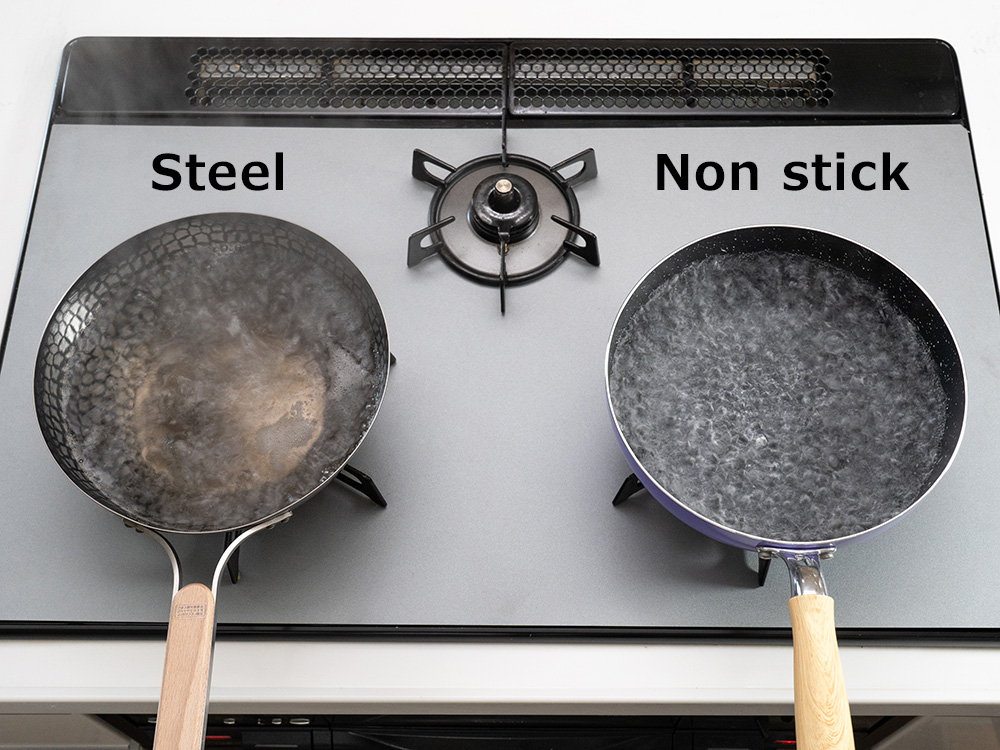
I put the boiled water into a transparent plastic bottle. Although it's subtle, the water boiled in the iron pan on the left seems to be slightly colored. The water boiled in the fluororesin-coated aluminum pan appears to remain colorless and transparent. Since there is a difference, it seems there might be some distinction…
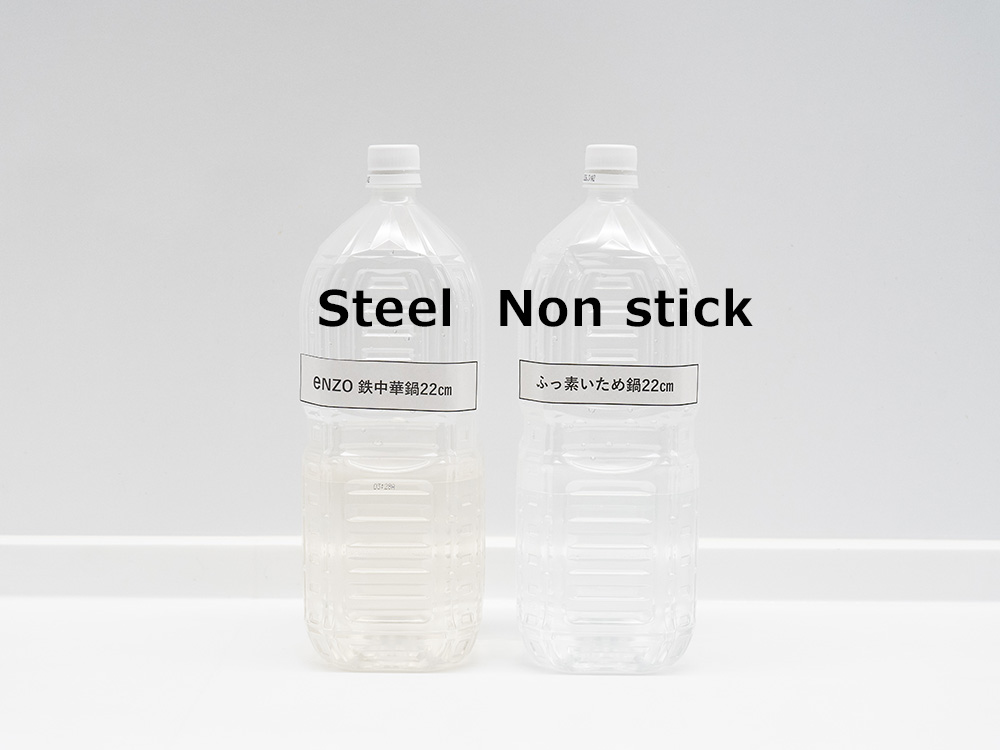
Even if there is a difference, unlike an iron kettle, it is unlikely that you would boil water in a pan just to drink it. I thought that even if a difference appeared in this experiment, it would be a "test for the sake of testing," which is not what everyone wants to know, as it differs from actual cooking.
Check by cooking.
Since the way iron dissolves may vary depending on the dish being prepared, we cannot provide a specific figure like "Cooking with an iron pan releases ○○mg of iron." However, similar to the previous pure water experiment, it seems possible to determine whether there is a difference in iron content when cooking the same ingredients in the same quantities using an iron pan versus a fluororesin-coated pan.
Since iron dissolves more easily in the presence of salt and acid, we chose "Ebi Chili" for this experiment, given that we are using a wok. Here are the ingredients we prepared.
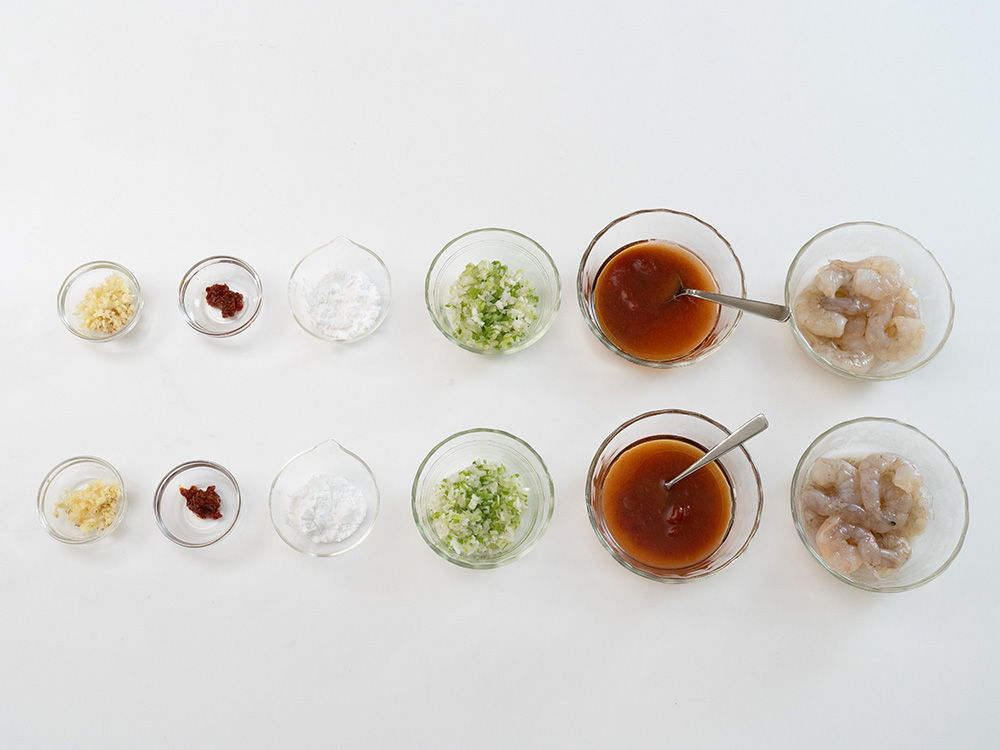
Ingredients prepared for this experiment.
- Peeled shrimp
- Green onions
- Chili sauce
- Garlic
- Red chili peppers
- Potato starch
Since the ingredients used also contain iron, analyzing the cooked food should definitely detect iron. However, the question is whether there will be a difference between the iron pan and the fluororesin-coated pan.
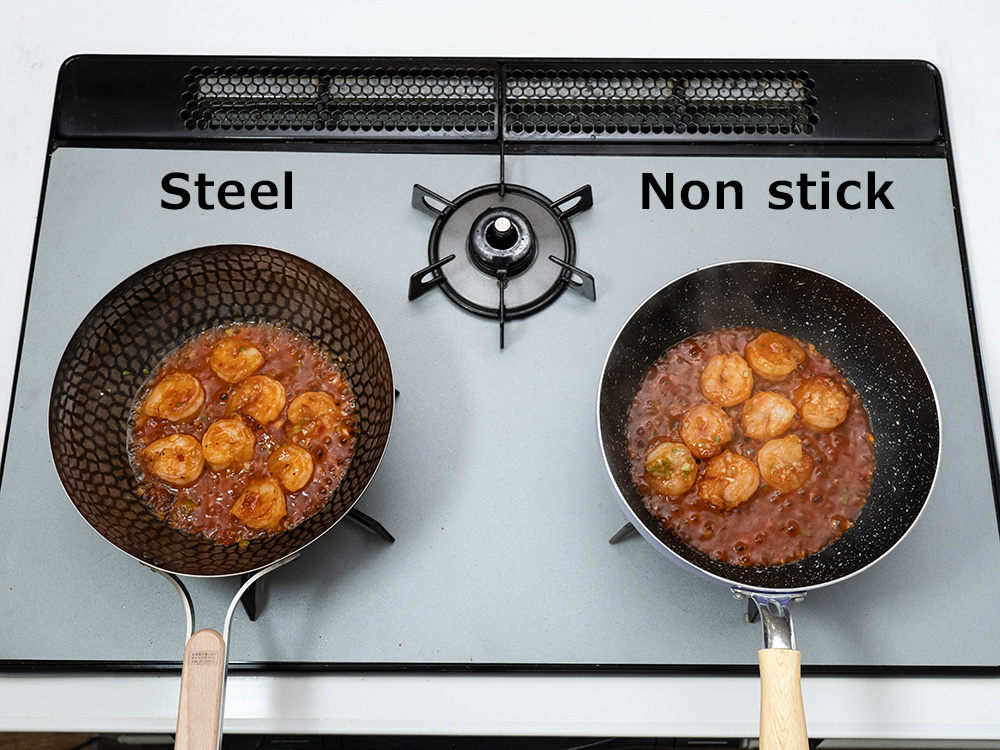
There were no noticeable differences during or after cooking. I wanted to compare the taste, but since I wanted to analyze it in its original state as much as possible, I had to just watch longingly.
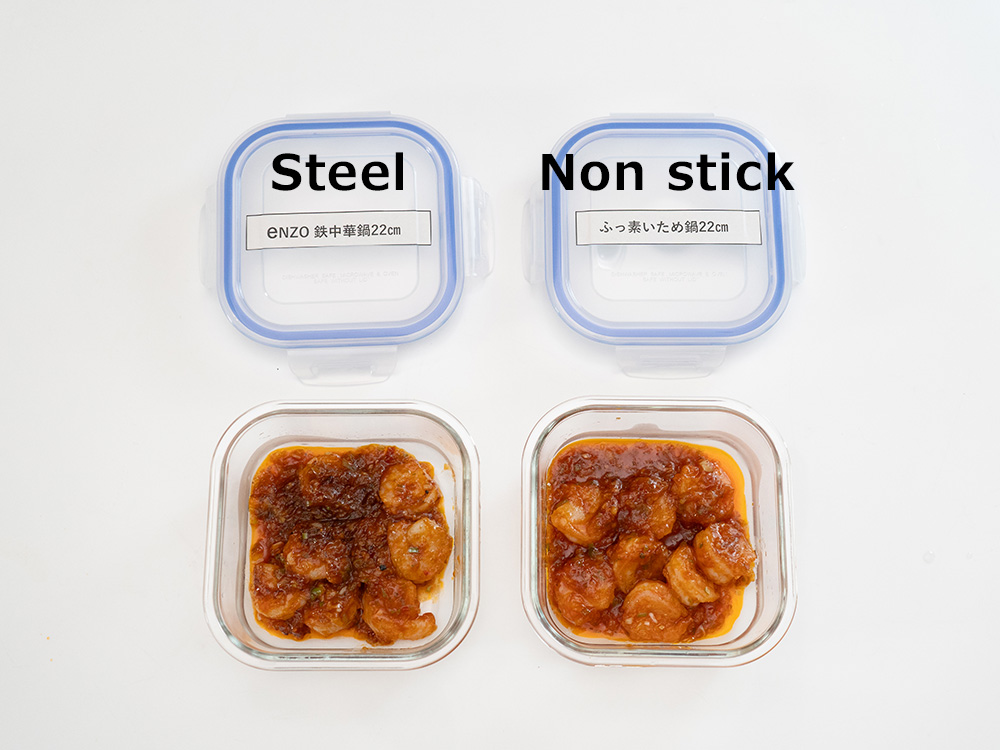
The results of the analysis.
To obtain objective results, we requested the analysis of the iron content in the boiled pure water and cooked food from a third-party organization, the Ken-O Research Institute. The analysis took approximately five days. Now, the results are…
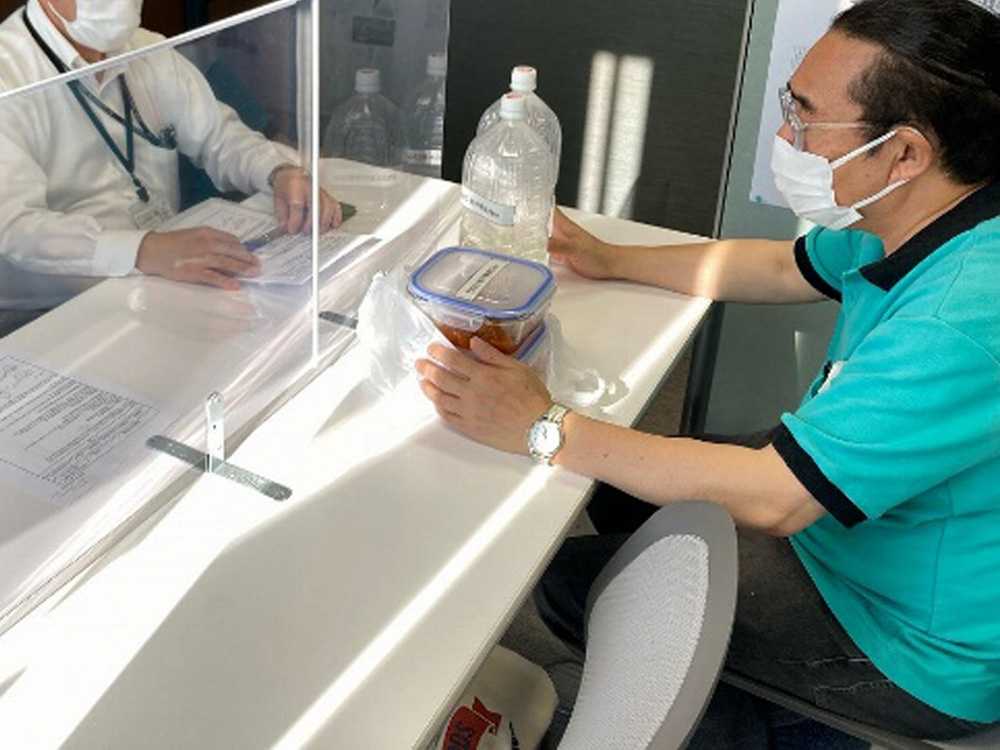
The analysis results of the boiled water.
To start with the results, iron was indeed detected. And clearly so. The results are quite interesting, so let me explain in detail. First, here are the analysis results of the boiled pure water.
Analysis test results.
| Sample name | Iron content | |
| Test sample | iron wok | 0.05mg/100mL |
| Comparison sample | aluminum pan with fluororesin coating | Not detected (quantification limit 0.01 mg/100 mL) |
Analysis method: Atomic absorption spectrophotometry
*Test conducted with samples prepared by the requester
In the water boiled in an iron pot, 0.05 mg of iron per 100 mL was detected. On the other hand, no iron was detected in the water boiled in a fluororesin-coated pot. This means that iron is released into the water boiled in an iron pot. Conversely, fluororesin is a very stable substance, so it is confirmed that nothing is released into the boiled water.
However, as mentioned at the beginning, the recommended daily iron intake for adult men is 7.5 mg. To meet the recommended intake with this hot water alone, you would need to drink 15 liters.
Analysis results of cooked items
Next, let's look at the analysis results of the cooked item (shrimp chili). Since the ingredients of shrimp chili also contain iron, iron should be detected in the dish cooked in a fluororesin-coated pot as well, but what will the results show…
Analysis test results.
| Sample name | Iron content | |
| Test sample | iron wok | 5.7mg/100g |
| Comparison sample | aluminum pan with fluororesin coating | 0.2mg/100g |
Analysis method: Atomic absorption spectrophotometry
*Test conducted with samples prepared by the requester
While the iron content in the ingredients is 0.2 mg per 100 g, the dish cooked in an iron pot contains 5.7 mg. This is a difference of 28.5 times!! A simple subtraction shows that 5.5 mg of iron has leached into the food from the iron pot. The test results indicate that eating 150 g of shrimp chili cooked in an iron pot provides the daily iron intake for an adult man.
Introduction to the iron wok recommended by Wahei Freiz.
We will introduce our recommended iron wok.
WAHEI ENZO Nitrided Iron Wok
The goal was to create a lightweight and easy-to-handle iron wok that even women can use for stir-frying. Iron is ideal for stir-frying, where high heat is crucial, but its weight is a drawback. Therefore, we repeatedly experimented with different processing methods and traditional techniques to develop this product. We hope this wok, which retains the benefits of iron while reducing its weight to the limit, will help you make delicious, crispy stir-fried vegetables.

